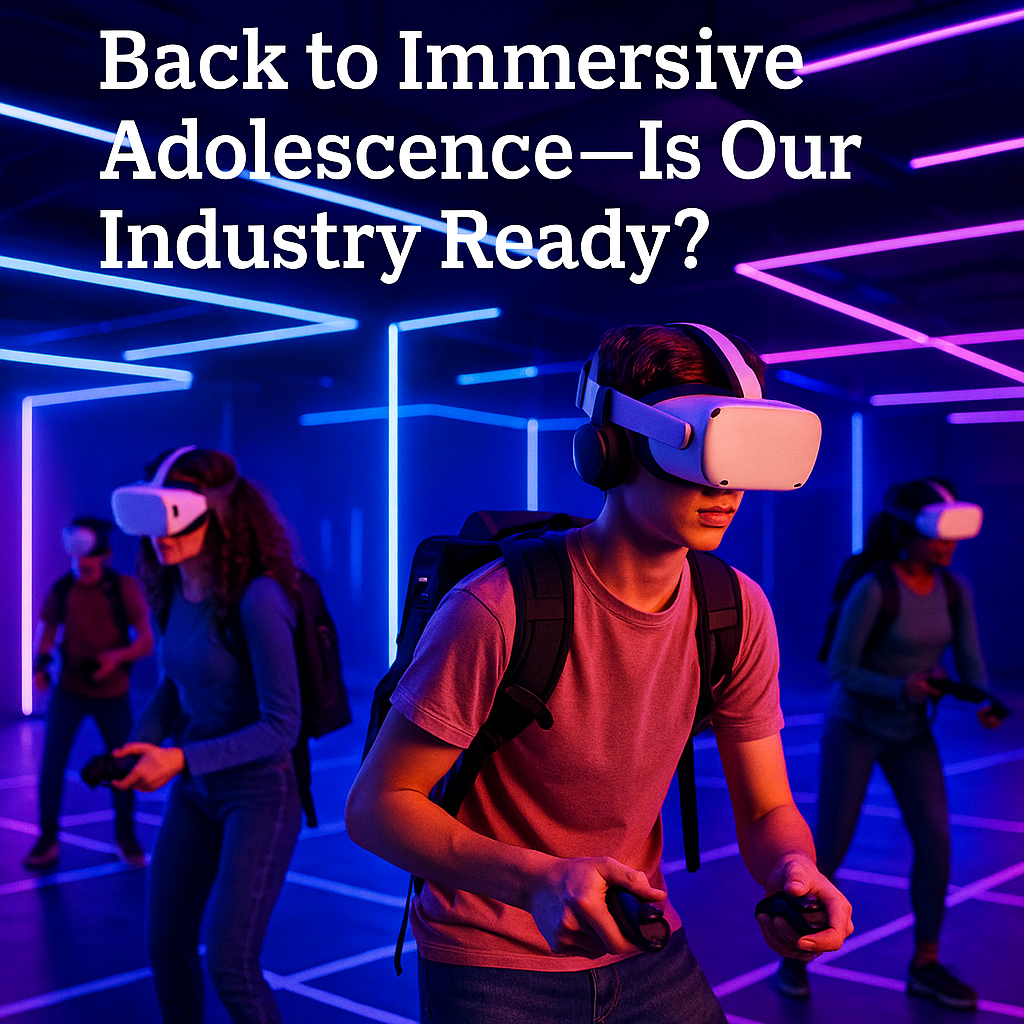
The market is growing up fast, but it still doesn’t have its driver’s license. Here’s what LBVR operators and investors need to know before handing over the keys to the Mustang.
The 2025 Immersive Industry Report clocks global entertainment and media at nearly $3 trillion this year, with the double‑digit growth coming almost entirely from interactive formats like VR and esports. Admittedly that lumps in everything, but traditional media is fading to the back of the class – immersive is the class president and homecoming queen.
For LBVR, that means the rising tide is working in our favour. But adolescence is messy: hit‑driven revenue, uneven quality, shitty business models, and landlords who think chalk dust is profit.
A survey of 350+ immersive fans shows 46 % will drop $50‑99 for a one‑hour experience, and 44 % see $100‑199 as fair for a two‑hour run time. Travel matters: People who cover long distances for the good stuff are even happier to spend at the upper end.
Why it matters to LBVR: one‑hour is the sweet spot for free‑roam attractions. Price anchors north of $50 are achievable so long as you deliver interactivity, live game‑mastering, and decent throughput.
Take‑aways
Jeff Lessard of ASM Global nailed it: “Capital is number 1, 2, and 3.”
Fifty‑seven percent of creators still self‑fund, skating on personal credit and ticket cash‑flow. For LBVR, that means many of the coolest prototypes never scale past one city block.
What’s changing? Real‑estate owners are easing the pain with tenant‑improvement allowances, revenue‑share leases, and even equity trades in exchange for lower base rent.
Operators who can prove >50 % capacity and four‑star reviews are suddenly in the driver’s seat.
Action Items
Consultancy Habo pegs U.S. immersive LBE revenues at $3.9 billion in 2024, growing 21 % CAGR since 2019.
That stat is behind the 35‑acre expansion at AREA15 and new “experience districts” sprouting outside NFL arenas. Landlords see LBVR as the sharable anchor tenant that drives F&B and retail cross‑spend.
Key deal levers
Most VR attractions are single digit guests per session. If your LBVR footprint can’t push 60‑120 guests an hour, you’re fighting gravity on rent and staffing.
Throughput tips
Nearly 64 % of surveyed fans don’t own a headset and aren’t planning to buy one.
That’s a moated market for location‑based VR. We’re the gateway drug: high‑fidelity, friction‑free, and social.
But guests are savvier. They want the five table‑stakes qualities: interactivity, uniqueness, purpose‑built environments, live actors (or solid AI characters), and emotional punch.
Miss any one and you’ll fall short of that precious minimum 4.7 Google review target.
The 2025 report confirms what many of us feel: immersive is no longer a curiosity. It’s a sector pushing real dollars, real leases, and real expectations. LBVR sits at the intersection of tech novelty and proven location economics – but only for operators who treat throughput and refresh cycles with the same reverence Hollywood gives IP.
Question for you: What’s the single biggest friction point you face scaling your LBVR footprint – capital, landlord negotiations, or consistent guest flow? Drop me a line and let’s unpack it in next week’s Inside VR AMA.

